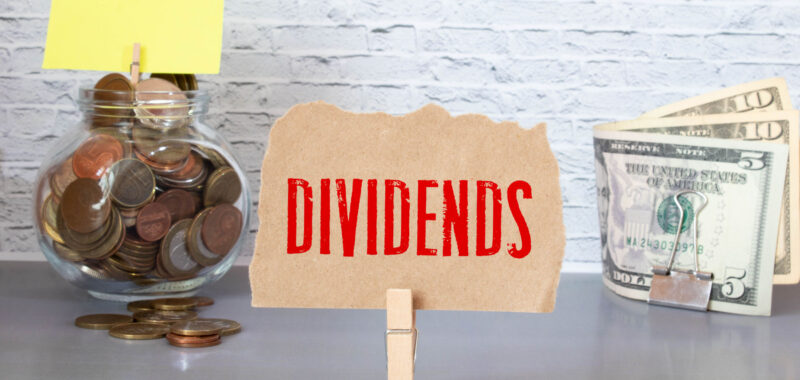Lke (or need) dividends? If so, you’re not alone. There’s much to be said for regular and reliable cash payments going into your account, if not right into your hand.
As is the case with any company, however, there’s avoidable risk in picking individual dividend stocks. You can lower this risk by owning a basket of several dividend-paying stocks, in the form of an exchange-traded fund (ETF).
There are plenty of different dividend ETFs to choose from. Which is the best for most income-minded investors? One arguably stands out among the rest — just not the one you might think.
Yield isn’t everything
The ProShares S&P 500 Dividend Aristocrats® ETF (NOBL -0.53%) is a top-of-mind name for most investors looking to simplify their source of dividend income with an ETF. (The term “Dividend Aristocrats” is a registered trademark of Standard & Poor’s Financial Services LLC.)
These stocks are among the market’s most-proven dividend payers as well as dividend growers, with a minimum of 25 consecutive years of annual increases. Newcomers will be plugging into the Dividend Aristocrats ETF while its trailing yield stands at a respectable 2%. That’s not huge, but remember: The underlying dividend has grown for decades.
It’s not necessarily the best option for you, however.
Neither is the iShares Core Dividend Growth ETF (DGRO -0.41%), built to reflect the Morningstar US Dividend Growth Index. It requires five years’ worth of uninterrupted annual payout increases to be included in the index, allowing in a bunch more stocks that may have recently begun to shine, but have yet to prove their staying power. To this end, there are now over 400 constituents in this index, with an average trailing yield of 2.3%.
So which is the top dividend-focused ETF for most investors? It’s the Vanguard Dividend Appreciation ETF (VIG -0.38%). Despite its modest yield of only 1.65%, it’s arguably the best all-around bet for investors counting on investment income now and well into the future. It offers the optimal balance of current dividend yield, potential for capital appreciation, and dividend growth.
Comparing and contrasting
The key here is how these ETFs’ underlying indexes are constructed.
As was noted, the Dividend Aristocrats ETF is simply an equal-weighted assembly of the 66 S&P 500 (SNPINDEX: ^GSPC) stocks that have raised their per-share payouts for at least 25 consecutive years. Not all of these names have much going for them other than their persistent dividend growth, however.
For example, J.M. Smucker‘s shares are actually down for the past 10 years, as are Amcor‘s. Indeed, although these are all high-quality companies, on the basis of capital appreciation alone, the Dividend Aristocrats index has collectively underperformed for the past several years. Adding the index’s respective (and reinvested) dividends into the mix doesn’t change this surprising weakness, either.
^SPXDA data by YCharts.
The Morningstar US Dividend Growth Index seemingly solves this problem by lowering the dividend-growth standard for inclusion in the index, but it also adds something of a judgment call to the mix. Namely, it requires some degree of proven capacity to continue these dividend increases.
It still doesn’t work quite as well as one might expect, though. Perhaps it’s the way Morningstar weights the index based on the total value of these companies’ dividend payments rather than their market caps, making lethargic tickers like JPMorgan Chase and Johnson & Johnson its biggest holdings right now.
So how is the Vanguard Dividend Appreciation ETF’s underlying index — the S&P U.S. Dividend Growers Index — different? It’s a little more and a little less picky about what’s included, excluding the names that are demonstrably more likely to underperform in dividend growth as well as price appreciation.
Its rules for inclusion in the index are simple enough: A stock must have raised its dividend payment for at least 10 consecutive years. Not every such stock will qualify, though. This index excludes the highest-yielding 25% of otherwise-qualifying names, based on the presumption that these high yields ultimately indicate some sort of brewing trouble, like a looming dividend cut.
And the methodology works! The mutual fund company The Hartford not only confirms that consistent dividend-paying stocks outperform the overall market in the long run (when reinvesting those dividends), but also that the very highest-yielding stocks don’t perform quite as well as shares of those companies paying solid dividends without crimping investment in their own growth. In other words, ensuring the healthy sustainability of these dividends factors into long-term performance, too.
On that note, the Vanguard fund’s current quarterly per-share payment is about twice what it was a decade ago.
Just be sure you’re prepared to stick with it
This isn’t to suggest you’re doomed if you happen to own the ProShares S&P 500 Dividend Aristocrats ETF or the iShares Core Dividend Growth ETF. All three of these exchange-traded funds are certainly more alike than different. Selling one of these other two just to own Vanguard’s popular dividend ETF isn’t urgently necessary, particularly if doing so will create an unwanted tax liability.
But this comparative look does underscore the lesson that not all ETFs in the same category are perfectly interchangeable. And as veteran investors can attest, the little things often end up being big things. This becomes more and more true the longer you hold an investment.
To this end, the Vanguard Dividend Appreciation ETF’s unique characteristics really only matter if you’re going to stick with it for several years. Holding it for relatively short time frames may mean you end up getting out during a stage of the economic cycle that undervalues any and all dividend stocks.
JPMorgan Chase is an advertising partner of Motley Fool Money. James Brumley has no position in any of the stocks mentioned. The Motley Fool has positions in and recommends Amcor Plc, J.M. Smucker, JPMorgan Chase, ProShares S&P 500 Dividend Aristocrats ETF, and Vanguard Dividend Appreciation ETF. The Motley Fool recommends Johnson & Johnson. The Motley Fool has a disclosure policy.

